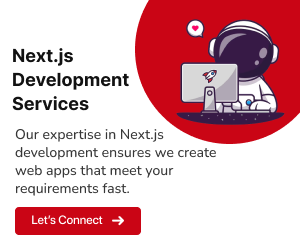In the dynamic realm of front-end web development, staying at the forefront of technology is crucial. As we enter the year 2024, React, an open-source JavaScript library maintained by Facebook, stands as one of the cornerstones of modern web development. Its component-based architecture, coupled with a thriving ecosystem, has made React the go-to choice for building dynamic and responsive user interfaces. To bolster this formidable framework, developers rely on an array of developer tools designed to streamline their workflow, enhance code quality, and simplify debugging. In this blog, we will explore the world of React, delve into its advantages, and then dive into the essential developer tools that are set to empower US developers in 2024.
React JS
React, often referred to as React.js, is an open-source JavaScript library developed by Facebook. Its primary purpose is to build user interfaces for web applications with a focus on simplicity, reusability, and efficiency. React’s key features include a virtual DOM for optimal performance, component-based architecture for modularity, and a declarative approach to building UIs. In 2024, React remains a top choice for developers due to its adaptability and robust ecosystem.
Advantages of React JS
Component Reusability:
React’s component-based architecture promotes reusability, making it easier to manage and maintain large applications. Developers can create reusable UI components, reducing redundant code and effort.
Virtual DOM:
React’s Virtual DOM efficiently updates and renders changes, leading to improved performance. It calculates the minimal number of updates required to keep the user interface in sync with the underlying data.
Declarative Syntax:
React’s declarative syntax simplifies the process of building and understanding UIs. Developers describe what the UI should look like, and React takes care of the how.Thriving Ecosystem:
React benefits from a vast ecosystem of libraries, tools, and community support. This ecosystem enables developers to find solutions for almost any requirement or problem they encounter.
Developer Tools
Effective development is not solely reliant on the programming language or library; it also hinges on the developer tools available. These tools can significantly impact productivity, code quality, and the overall development experience.
Advantages of Developer Tools
Debugging Assistance:
Developer tools provide invaluable assistance during the debugging process. They offer insights into application behavior, facilitate the inspection of variables and states, and help locate and fix issues efficiently.
Code Quality Assurance:
Tools like ESLint and Prettier enforce coding standards and automate code formatting. This ensures consistent and high-quality code, reducing the likelihood of bugs and enhancing collaboration within development teams.
Performance Optimization:
Developer tools often include features for profiling and performance analysis. This allows developers to identify bottlenecks and optimize code and resource usage for improved application speed and responsiveness. For example, tools like Chrome DevTools provide performance analysis features that help pinpoint performance issues in web applications.
Cross-Browser Compatibility:
Many developer tools offer features to test and debug applications across multiple browsers. This is essential for ensuring that web applications function correctly and consistently on various browser platforms. Browser developer tools like those provided by Chrome, Firefox, and Microsoft Edge help developers identify and fix browser-specific issues.
Also Read: Best Backend for React in 2023-24
Top React Developer Tools for US Developers in 2024

Now, let’s explore the top React developer tools that are poised to be indispensable for US developers in 2024. These tools will enable developers to streamline their React development workflows and create outstanding user interfaces.
1. React DevTools
React DevTools is an essential browser extension for React developers. It enables them to inspect and debug React components with ease. Some key features include:
Component Hierarchy:
Developers can visualize the component hierarchy in real-time. This feature aids in understanding the structure of a React application, making it easier to locate and address issues.Props and State Inspection:
React DevTools allows developers to inspect the props and state of components, which is invaluable for tracking data flow and diagnosing bugs.Component Highlighting:
It offers the ability to highlight specific components in the UI, helping developers quickly identify and focus on the component they are interested in.Real-time Updates:
Developers can observe changes in component state and props in real-time as they interact with the application, making it an excellent tool for debugging.
React DevTools simplifies the debugging process for React applications, making it an indispensable tool for US developers in 2024.
2. Redux DevTools
Redux DevTools is essential for React developers using Redux as their state management solution. It provides a range of features to streamline the debugging process:
Action Logging:
Redux DevTools logs every dispatched action, allowing developers to track the sequence of actions and their effects on the application state.Time-Travel Debugging:
This feature enables developers to move backward and forward in the application’s state history, making it easier to identify when and how a bug was introduced.State Snapshotting:
Developers can take snapshots of the application’s state at different points in time, aiding in the reproduction and debugging of specific issues.Integration with React DevTools:
Redux DevTools can be seamlessly integrated with React DevTools, providing a comprehensive debugging experience for React applications using Redux.
In 2024, Redux DevTools remains an indispensable tool for managing and debugging complex state in React applications.
3. ESLint
ESLint is a static code analysis tool that ensures code quality and enforces coding standards in React projects. Its capabilities include:
Code Consistency:
ESLint enforces consistent code style, reducing the likelihood of formatting-related debates within development teams.Detecting Code Issues:
It identifies potential code issues and bugs early in the development process, improving code quality and maintainability.Customizable Rules:
Developers can configure ESLint to adhere to specific coding standards or project requirements by enabling or disabling rules.Editor Integration:
ESLint can be integrated into popular code editors, providing real-time feedback to developers as they write code.
ESLint is crucial for maintaining clean and reliable code in React projects and continues to be a valuable tool in 2024.
4. Prettier
Prettier is an opinionated code formatter that automates code formatting to ensure consistency. Key features include:
Automatic Formatting:
Prettier automatically formats code according to predefined rules, eliminating manual formatting and code style debates.Configurability:
While opinionated, Prettier allows some configuration, so developers can tailor it to their project’s needs.Editor Integration:
Prettier seamlessly integrates with code editors, ensuring that code is formatted consistently as developers write it.Wide Language Support:
Prettier supports not only JavaScript but also various other languages, making it versatile for multi-language projects.
In 2024, Prettier remains a valuable tool for React developers, enabling them to focus on writing code while ensuring consistent formatting.
5. Webpack
Webpack is a versatile module bundler and build tool with several features that simplify the development and deployment of React applications:
Module Bundling:
Webpack efficiently bundles JavaScript modules, optimizing load times and reducing the number of HTTP requests.Code Splitting:
It enables code splitting, allowing developers to load only the necessary parts of an application, improving performance.Hot Module Replacement (HMR):
Webpack’s HMR feature facilitates real-time updates during development, enabling developers to see changes without a full page reload.Extensible Configuration:
Webpack’s configuration can be customized to accommodate various project needs, making it flexible for different development scenarios.
In 2024, Webpack continues to be a vital tool for React developers, aiding in efficient bundling and optimization of their applications.
6. Babel
Babel is a JavaScript compiler that allows React developers to write modern JavaScript code while ensuring compatibility with older browsers. Some key features include:
JavaScript Transformation:
Babel transforms modern JavaScript syntax into older versions, enabling developers to use the latest language features.Plugin System:
Babel’s plugin system is highly extensible, allowing developers to add custom transformations or use presets to streamline configuration.Compatibility:
It ensures cross-browser compatibility, making React applications accessible to a wider audience.Integration:
Babel can be easily integrated into a React project’s build process, providing seamless transpilation of code.
In 2024, as JavaScript continues to evolve, Babel remains a critical tool for React developers to keep their code up-to-date and compatible with various browsers.
7. Jest
Jest is a testing framework developed by Facebook that simplifies unit and integration testing for React applications. Key features include:
Fast and Reliable:
Jest is known for its speed and reliability, making it ideal for running tests in React projects.Snapshot Testing:
It supports snapshot testing, allowing developers to capture and compare component output over time to catch unexpected changes.Mocking:
Jest makes it easy to mock dependencies and simulate various scenarios, improving test coverage.Intuitive Matchers:
It includes a range of intuitive matchers for asserting that certain conditions are met in your tests.
Jest is a go-to testing framework for React developers in 2024, helping ensure the quality and reliability of their applications.
8. Cypress
Cypress is an end-to-end testing framework designed for modern web applications, including React. Its features include:
Real-time Interactive Testing:
Cypress provides real-time interactive testing, allowing developers to see what’s happening in the application as tests run.Cross-browser Testing:
It supports cross-browser testing, ensuring that React applications work seamlessly across different browsers.Debugging:
Cypress offers built-in debugging tools that make it easier to identify and address issues in tests.Time-Travel Debugging:
Similar to Redux DevTools, Cypress allows you to time-travel through your application’s state to identify issues.
In 2024, Cypress is expected to gain popularity as a preferred tool for UI testing among React developers due to its user-friendly features.
9. Evergreen
Evergreen is a UI framework designed specifically for React, offering a collection of customizable and accessible UI components. Key features include:
Customization:
Evergreen components are highly customizable, enabling developers to adapt them to match their project’s design requirements.Accessibility:
Evergreen prioritizes accessibility, making it easier to create user interfaces that are inclusive and compliant with accessibility standards.Responsive Design:
The framework promotes responsive design practices, ensuring that UI components adapt well to different screen sizes.Community Support:
Evergreen benefits from an active community, providing ongoing support and updates.
Evergreen simplifies the process of building elegant and accessible user interfaces in 2024, adhering to design and accessibility best practices.
10. Storybook
Storybook is a powerful tool for developing and documenting UI components in isolation. Some key features include:
Component Showcase:
Storybook provides a platform for showcasing UI components in various states, making it easier to visualize and test component behavior.Interactive Documentation:
It serves as interactive documentation, enabling developers and designers to collaborate more effectively.Component Testing:
Storybook supports component testing, allowing developers to test individual components in isolation.Add-ons and Plugins:
It offers a range of add-ons and plugins to extend its functionality and tailor it to specific project needs.
In 2024, Storybook remains a preferred choice for designing, documenting, and testing React components in a modular and efficient manner.
Related: The Future of React JS : Top Trends & Predictions
Conclusion
In 2024, React developers in the United States have access to a powerful toolkit that combines the versatility of React.js with a suite of essential developer tools. These tools collectively empower developers to create exceptional user interfaces, maintain code quality, and streamline their development workflows. By incorporating these top React developer tools into their projects, US developers can continue to lead the way in front-end development and deliver outstanding user experiences. React’s dominance in the industry is reinforced by these tools, ensuring that it remains a top choice for building modern web applications.


























